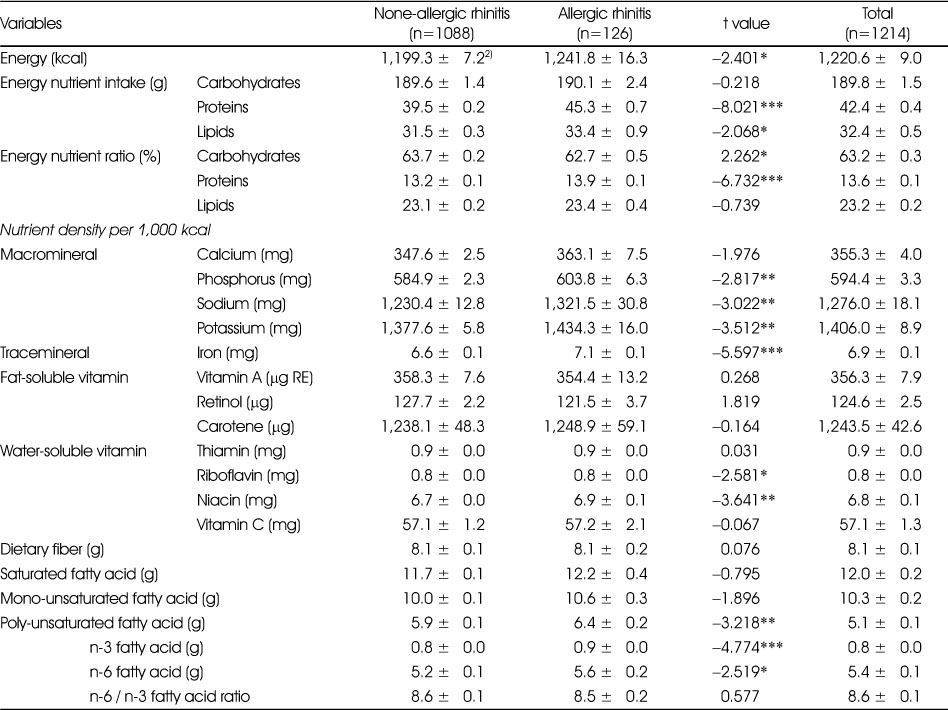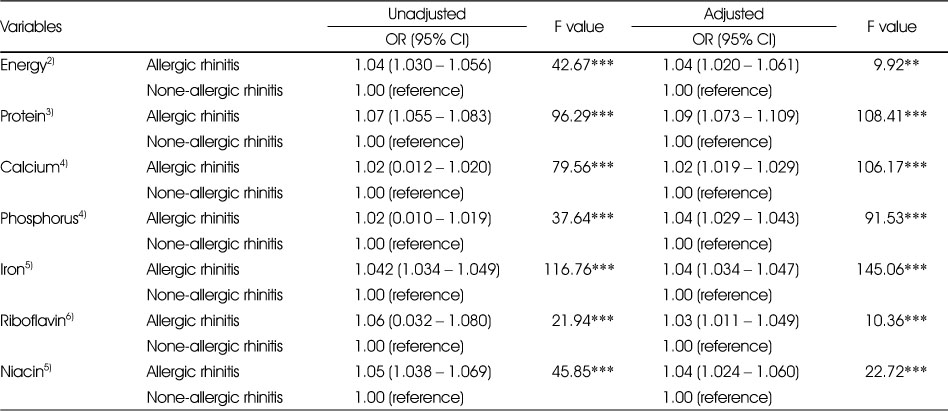References
1. Kim HM, Heo JA, Park YH, Lee JT. The effect of air pollution on allergic diseases considering meteorological factors in metropolitan cities in Korea. J Environ Health Sci 2012;38(3):184–194.
2. Ahmed E, Kim KH, Shon ZH, Song SK. Long-term trend of airborne particulate matter in Seoul, Korea from 2004 to 2013. Atmos Environ 2015;101:125–133.
3. Kim SH, Yang HJ, Jang AS, Kim SH, Song WJ, Kim TB. Effects of particulate matter in ambient air on the development and control of asthma. Allergy Asthma Respir Dis 2015;3(5):313–319.
4. Min S, Cho M, Park K. Risk factors for allergic diseases in school-aged children. J Korean Soc Food Sci Nutr 2013;42(9):1387–1394.
5. Asher MI, Montefort S, Bjorksten B, Lai CK, Strachan DP, Weiland SK. Worldwide time trends in the prevalence of symptoms of asthma, allergic rhinoconjunctivitis, and eczema in childhood: ISAAC phases one and three repeat multicountry cross-sectional surveys. Lancet 2006;368(9537):733–743.
6. Björkstén B, Clayton T, Ellwood P, Stewart A, Strachan D, ; ISAAC Phase III Study Group. Worldwide time trends for symptoms of rhinitis and conjunctivitis: Phase III of the International Study of Asthma and Allergies in Childhood. Pediatr Allergy Immunol 2008;19(2):110–124.
7. Williams H, Stewart A, von Mutius E, Cookson W, Anderson HR, ; International Study of Asthma and Allergies in Childhood (ISAAC) Phase One and Three Study Groups. Is eczema really on the increase worldwide? J Allergy Clin Immunol 2008;121(4):947–954.
8. Suh SH. Prevalence of allergic diseases in Korean children. Health Dis 2010;2011(4):425–431.
9. Ministry of Health and Welfare. Korea Centers for Disease Control and Prevention. Korea national health and nutrition examination survey raw data use guidelines [Internet] Korea Centers for Disease Control and Prevention; 2015. updated 2019 Mar 07. cited 2019 Jul 23. Available from:
https://knhanes.cdc.go.kr/knhanes/sub03/sub03_02_02.do.
10. Cho AR, Lee SY, Kim YH, Yoo Y, Yang HJ, Lee JS. Multicenter study on factors influencing the quality of life of asthmatic children and their caregivers. Pediatr Allergy Respir Dis 2012;22(1):37–44.
11. Kim JH, Lee HC, Jang JH, Ahn KM, Han YS, Lee SI. Risk factors influencing growth in children with atopic dermatitis. Pediatr Allergy Respir Dis 2008;18(4):339–348.
12. Palit A, Handa S, Bhalla AK, Kumar B. A mixed longitudinal study of physical growth in children with atopic dermatitis. Indian J Dermatol Venereol Leprol 2007;73(3):171–175.
13. Huggins KG, Brostoff J. Letter: Local IgE antibodies in allergic rhinitis. Lancet 1975;2(7935):618.
14. Ahn HS, Lee SM, Lee MY, Choung JT. A study of the dietary intakes and causative foods in allergic children. Pediatr Allergy Respir Dis 1999;9(1):79–92.
15. Min S, Cho M, Park K. Risk factors for allergic diseases in school-aged children. J Korean Soc Food Sci Nutr 2013;42(9):1387–1394.
16. Lee SM, Lee SP. Classification and epidemiology of allergic rhinitis. Korean J Med 2013;85(5):445–451.
17. Dom S, Droste JH, Sariachvili MA, Hagendorens MM, Bridts CH, Stevens WJ. The influence of parental educational level on the development of atopic sensitization, wheezing and eczema during the first year of life. Pediatr Allergy Immunol 2009;20(5):438–447.
18. Corvalan C, Amigo H, Bustos P, Rona RJ. Socioeconomic risk factors for asthma in Chilean young adults. Am J Public Health 2005;95(8):1375–1456.
19. Kim SH. Allergic diseases and the residential environments. Archit Res 2015;59(2):24–27.
20. Cho SH. Update of asthma management guideline: GINA 2006. Korean J Med 2007;72(3):245–255.
21. Raman R. Vasomotor rhinitis-atrophic rhinitis: two ends of an autonomic spectrum. Singapore Med J 1989;30(1):94–96.
22. Bousquet J, Van Cauwenberge P, Khaltaev N, ; Aria Workshop Group, ; World Health Organization. Allergic rhinitis and its impact on asthma. J Allergy Clin Immunol 2001;108(5 Suppl):S147–S334.
23. Ministry of Health and Welfare. Dietary reference intakes for Korean 2015 th ed. Seoul: The Korean Nutrition Society; 2015. p. 26–160.
24. Kim EK, Song B, Ju SY. Dietary status of young children in Korea based on the data of 2013 ~ 2015 Korea National Health and Nutrition Examination Survey. J Nutr Health 2018;51(4):330–339.
25. Park SJ, Lee JS, Ahn KM, Chung SJ. The comparison of growth and nutrient intakes in children with and without atopic dermatitis. Korean J Community Nutr 2012;17(3):271–279.
26. Shin JW, Kim WK, Yoon HS. Association of breast-feeding and allergic diseases in preschool aged children. Pediatr Allergy Respir Dis 2009;19(4):374–382.
27. Ehlayel MS, Bener A. Duration of breast feeding and the risk of childhood allergic diseases in a developing country. Allergy Asthma Proc 2008;29(4):386–391.
28. Spergel JM, Paller AS. Atopic dermatitis and the atopic march. J Allergy Clin Immunol 2003;112(6 Suppl):S118–S127.






